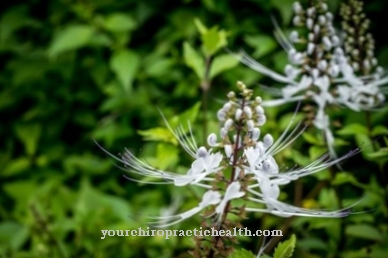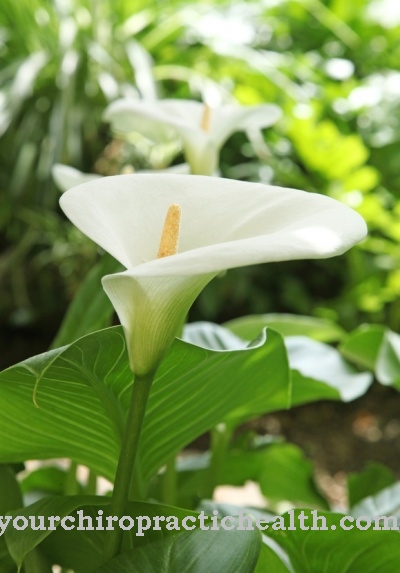Figs belong to the oldest domesticated crops ever. Already in ancient times they were revered as a staple food and grown in abundance. Not only do they taste good, they also have a number of positive effects on health.
Occurrence & cultivation of the fig

The entire plant contains milk juice, which is used in folk medicine, among other things. The leaves of the fig tree are leathery and have a toothed edge and a rough-haired top. They can be up to eight inches wide. The inflorescence is pear-shaped and single-sexed in many fig species. Both female and male inflorescences can be found on one specimen.
After three to five months, the female inflorescence develops into a fig. The stone fruit contains small seeds inside and is spherical to pear-shaped. Their color is green to dark purple, depending on the species, the pulp is red. House or common figs are particularly edible. It has only female flowers and has the appendix var. Domestica. The fig has been cultivated in the entire Mediterranean region since ancient times, although its origin has not been proven with certainty. It also finds itself wild again.
Effect & application
Up to 1.5 million tons of figs are harvested annually. A large part of this is dried. This is done either in the sun or in hot air ovens. While figs normally contain around 80 percent water, drying reduces their water content to up to 18 percent. The sugar content rises to around 60 percent. The main use of figs is as a fruit in trade and markets.
However, the juice of the figs is also processed into dessert wine and sold. In addition, in some countries the fig is also roasted and sold as fig coffee. In Spain and Portugal it is even made into fig cheese. In the 13th and 15th centuries, the wood of the fig tree was processed into wooden panels. These were used in painting.
In addition, the white milk juice is used in folk medicine. Here it is used, for example, against warts or mosquito bites. In general, the fig contains a variety of health-promoting ingredients such as carbohydrates, fiber, various vitamins - especially vitamin B1 - and minerals.
Importance for health, treatment & prevention
Figs have a not to be despised effect on health. The many different ingredients have a positive effect on almost the entire organism. For example, figs act as antioxidants and protect the body from cell damage. The vitamin C it contains also protects the vessel walls from calcification. In this way, diseases such as arteriosclerosis can be prevented. Figs are high in fiber. They mainly contain pectins.
On the one hand, this promotes digestive activity and prevents constipation and, on the other hand, dietary fibers cause a quick feeling of satiety. This makes them ideal for diets and can help you lose weight in a healthy way. In addition, there is the optimal composition of sugar in figs, which regulates the blood sugar level. With this they can - also as tea - lower the insulin level in diabetes.
They are also a rich source of carbohydrates and protein and promote the formation of good HDL cholesterol. Due to their high levels of potassium, they lower blood pressure and provide the body with iron. This can help prevent anemia. In addition, the minerals it contains have a positive effect on concentration. Calcium, iron, phosphorus, manganese, magnesium and zinc increase memory performance and can be, for example, the optimal and healthy snack for schoolchildren and students during learning phases.
By the way, the fig is also said to have a positive effect on tumor diseases. The fiber and omega-3 and omega-6 fatty acids are responsible for this. If you are sick, fig tea is suitable for coughing. They are antibacterial and can therefore also be used externally for skin diseases. Their antiseptic and decongestant effects help to relieve discomfort and promote healing.
The calcium it contains also strengthens bones and teeth and helps keep them healthy. Figs also have promising effects on the state of mind. They serve to reduce stress and promote satisfaction. They can also help you sleep better, making them an effective remedy for sleep disorders. The reason for this is the many different vitamins that figs contain.
In addition, figs contain the protein tryophan, which, as a precursor to the happiness hormone serotonin, brightens the mood and can lift the mood. This means that the fig can be seen as an all-rounder for health. It is used internally as a food as well as externally for skin complaints and shows a whole range of promising effects on the human body.
However, due to the large amount of fiber and sugar, sensitive people can react with intestinal problems after eating figs. Therefore figs should only be consumed in moderation.



























